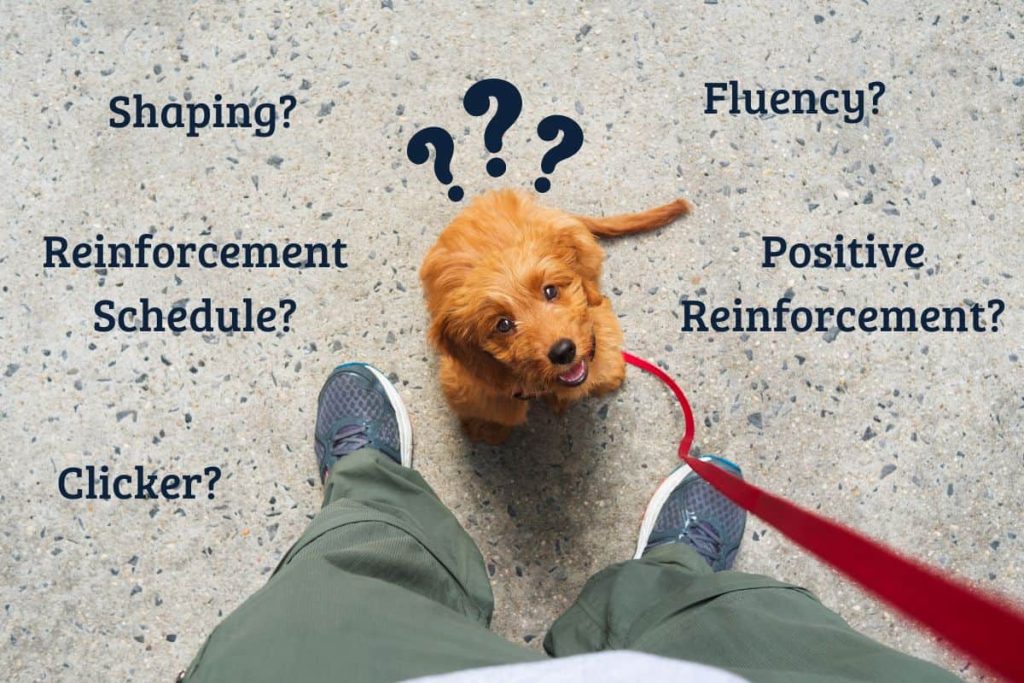Clicker Training: A Step-by-Step Guide to Effective Pet Communication

Understanding the Power of Clicker Training
Imagine a world where your pet can respond to your commands with enthusiasm, understanding you in ways you never thought possible. Enter clicker training, a revolutionary method that enhances the way you communicate with your furry companion. By utilizing a small handheld device that emits a distinct clicking sound, this training technique not only makes obedience training more efficient but also creates a deeper connection between you and your pet.
Clicker training pivots on the principle of positive reinforcement, which implies rewarding desired behaviors rather than punishing mistakes. This approach fosters an enjoyable atmosphere during training sessions for both pet and owner, leading to a more productive learning experience. Here are a few compelling reasons to integrate clicker training into your regimen:
- Clear Communication: The click sound serves as a precise marker, indicating immediately which specific action is being rewarded. This clarity helps eliminate confusion often caused by traditional voice commands.
- Immediate Feedback: Unlike verbal praise, which may come a few seconds after the desired action, the click sound provides instant reinforcement. This immediacy is vital for your pet’s understanding, aiding faster learning of commands.
- Fun for Everyone: Training sessions utilizing a clicker become interactive games rather than mundane chores, ensuring that both you and your pet share joyful moments and strengthen your bond.
Clicker training also has its roots in behavioral psychology, which suggests that animals learn best when they are positively reinforced for desired behaviors. This technique is not limited to just dogs; it is adaptable to a variety of pets, including cats, birds, rabbits, and even marine animals! For instance, parrot owners in the United States have reported incredible progress in their birds’ ability to mimic words and phrases, simply through consistent clicker training sessions.
Are you excited to begin this journey? Implementing clicker training is straightforward. Start by introducing your pet to the clicker, allowing them to associate the sound with treats. Gradually, you can introduce simple commands and behaviors, reinforcing their actions with both clicks and snacks. Remember, patience is key. As your pet learns and grows, so will your relationship, filled with trust and understanding.
Join us as we explore the intricacies of clicker training, uncovering essential techniques and invaluable tips to master this exciting method of pet communication. Your adventure into a deeper connection with your pet awaits!

DIVE DEEPER: Click here to learn more about pet nutrition
Getting Started with Clicker Training
Before diving into the world of clicker training, it’s crucial to understand the foundational elements that will set you up for success. The journey begins with a few essential supplies, a clear mindset, and a commitment to consistency. Let’s break down the fundamental steps to kick off your clicker training adventure:
- Select the Right Clicker: Invest in a high-quality clicker that feels comfortable in your hand. There are various types available, from classic handheld clickers to those designed with finger loops for ease of use. Choose one that resonates with you.
- Gather Treats: Prepare a selection of your pet’s favorite treats. Small, soft treats often work best because they can be consumed quickly, allowing for seamless training sessions without lengthy interruptions. You might consider options like small pieces of cooked chicken, cheese, or high-quality commercial training treats.
- Choose a Distraction-Free Environment: To ensure that your pet can focus, start training in a quiet, distraction-free area. This could be a room in your home or a calm outdoor space. Minimizing distractions is vital for successful learning.
Once you have your clicker and treats ready, it’s time to introduce your pet to the clicker itself. The initial stage of training is often referred to as “charging the clicker.” Here’s how to do it:
- Sound Association: Begin by clicking the device and immediately following it with a treat. Repeat this process several times until your pet starts to associate the click sound with receiving a reward. Watch carefully for their reaction; you want to see excitement or curiosity.
After your pet is familiar with the clicker, it’s time to move on to actual commands and behaviors. Start with simple commands like “sit” or “down,” which are fundamental and easier for your pet to grasp. Here’s a straightforward approach to teaching these commands:
- Using Hand Signals: If teaching “sit,” hold a treat above your pet’s nose, then move it back towards their tail. As they lower their rear to follow the treat, click as soon as their bottom touches the ground. Reward them immediately with a treat.
- Repeat and Refine: Continue practicing this command several times in short training sessions. Consistency is key! Repeat this process daily, gradually reducing the need for treats as your pet becomes proficient.
Equipped with these initial steps, you’re on a promising path toward effective pet communication. Remember to remain patient and encourage your pet throughout the training process. Clicker training is not just about teaching commands; it’s about building trust, understanding, and a deeper bond with your furry friend.
As you continue to practice these techniques, keep track of your pet’s progress and celebrate their achievements, no matter how small. The joy of seeing your pet learn and respond will make every moment spent clicking and training worthwhile!
| Advantage | Description |
|---|---|
| Clear Communication | Clicker training provides a distinct signal for desired behaviors, ensuring pets understand exactly what is expected. |
| Positive Reinforcement | Utilizing a clicker encourages a reward-based approach, fostering trust and enhancing the bond between pets and owners. |
Exploring these advantages reveals how clicker training serves as an essential method for enhancing your pet’s understanding and communication skills. This method not only clarifies desired behaviors but also makes the training process enjoyable for both pet and owner. By integrating clear communication and positive reinforcement, owners can significantly improve their pets’ behavior while nurturing a rewarding relationship. This guide will delve deeper into techniques and tactics, offering a comprehensive learning experience for those wishing to engage more effectively with their furry companions.
DISCOVER MORE: Click here for top pet adoption resources
Advanced Techniques in Clicker Training
Once you’ve established a solid foundation with basic commands, it’s time to explore advanced techniques in clicker training that will further enhance your pet’s learning and communication skills. These techniques not only help your pet learn new behaviors but also deepen the bond you share. Let’s delve into some of these engaging approaches.
- Shaping Behavior: This method involves rewarding successive approximations of a desired behavior. For example, if you want your dog to learn how to “roll over,” start by clicking and rewarding them when they lie down. Gradually, as they understand that lying down is rewarded, you can wait for them to turn onto their side and then click. This systematic approach celebrates small victories, motivating your pet to progress.
- Target Training: This technique involves teaching your pet to touch a target, such as your hand or a stick. Begin by placing the target in front of them and clicking when they show interest. Gradually, shape their behavior until they touch the target with their nose or paw. This opens up a world of possibilities for more complex tricks and commands.
As you become more skilled in clicker training, you may want to introduce more challenging commands that require greater levels of focus and learning. Utilizing the clicker, you can teach your pet some impressive tricks:
- Playing Dead: Start by teaching your pet to lie down. From this position, get them to roll onto their side. Click and reward when they do this. Gradually, you can introduce a command like “bang!” to signal them to fall over dramatically.
- Weaving Through Legs: Position your pet in front of you and hold a treat behind your leg. Encourage them to weave through your legs to get the treat. Click and reward them when they successfully navigate through. This is not only fun but also enhances their coordination and agility.
Another important aspect of clicker training is maintaining your pet’s interest and motivation throughout the process. Here are some strategies to keep training sessions engaging:
- Keep Sessions Short: Attention spans can vary greatly between pets. Aim for training sessions of 5 to 10 minutes, particularly for younger animals. Frequent breaks and varied activities help maintain focus and prevent boredom.
- Change Up Rewards: While treats are effective, sometimes combining them with verbal praise, pets’ favorite toys, or playtime can make training sessions more dynamic. Experiment and see what resonates best with your pet.
As you expand your clicker training expertise, consider incorporating the concept of generalization. This means teaching your pet to understand that commands apply in various settings and contexts. For example, practice the “sit” command in different locations like the park, a friend’s house, or outdoors. This not only reinforces the behavior but also helps your pet adapt to changing environments, making them more socially confident.
With a range of techniques at your disposal, you’ll find that clicker training offers endless opportunities to foster effective communication with your pet. Not only does it enhance their behavior, but it also enriches your relationship through shared accomplishments and mutual understanding. The journey of training together promises to be as rewarding as the results it yields.
LEARN MORE: Click here for insights on your pet’s nutrition
Conclusion
In conclusion, clicker training emerges as a powerful tool for pet owners seeking to establish effective communication and foster a deeper connection with their furry companions. By employing structured techniques such as shaping behavior and target training, you unlock an impressive array of commands and tricks that not only enhance your pet’s skills but also strengthen the bond you share. The beauty of this method lies in its emphasis on positive reinforcement, which encourages a sense of trust and willingness in your pet to engage and learn.
As you venture through the various levels of clicker training, remember that patience and consistency are key. The ability to maintain your pet’s motivation and interest through varied training sessions ensures that the communication lines between you remain vibrant and effective. Encouraging generalization of commands will teach your pet to respond appropriately in diverse environments, which is essential for their confidence and adaptability.
Ultimately, whether you are a novice pet owner or an experienced trainer, the journey of clicker training is both enriching and fulfilling. It unveils new dimensions of interaction, paving the way for countless memorable moments. Embrace the adventure of training with your pet; it promises not only to transform their behavior but also to cultivate a lasting relationship grounded in understanding and trust. So, gear up, grab your clicker, and let the bonding—and learning—begin!


